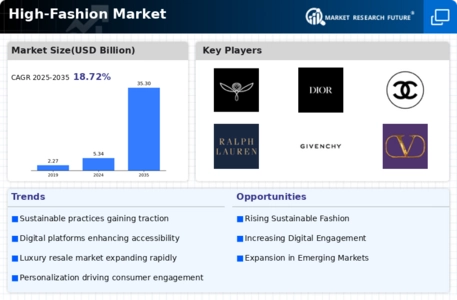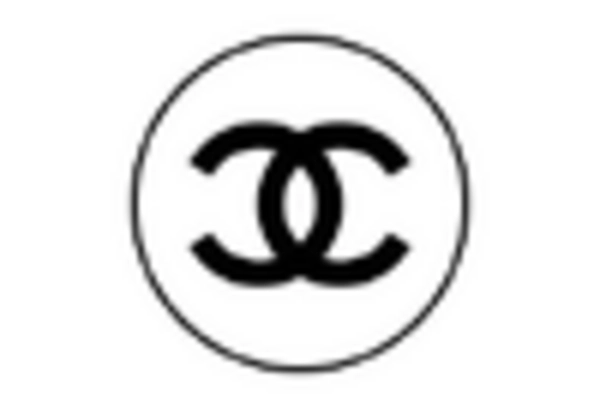The High-Fashion Market is currently characterized by a dynamic competitive landscape, driven by innovation, sustainability, and digital transformation. Major players such as LVMH (FR), Kering (FR), and Gucci (IT) are at the forefront, each adopting distinct strategies to enhance their market positioning. LVMH (FR) continues to leverage its extensive portfolio of luxury brands, focusing on regional expansion and digital engagement to capture emerging markets. Kering (FR), on the other hand, emphasizes sustainability, integrating eco-friendly practices into its supply chain, which resonates with the growing consumer demand for responsible luxury. Gucci (IT) has adopted a bold approach to digital marketing, utilizing social media platforms to engage younger demographics, thereby reshaping its brand image and consumer interaction.
The business tactics employed by these companies reflect a moderately fragmented market structure, where localized manufacturing and supply chain optimization play crucial roles. The collective influence of these key players fosters a competitive environment that encourages innovation and responsiveness to consumer trends. As brands strive to differentiate themselves, the focus on sustainability and digitalization becomes increasingly pronounced, shaping the operational strategies of high-fashion companies.
In August 2025, Kering (FR) announced a partnership with a leading technology firm to develop a blockchain-based system for tracking the sustainability of its supply chain. This strategic move not only enhances transparency but also aligns with the growing consumer expectation for ethical sourcing. By adopting such innovative technologies, Kering (FR) positions itself as a leader in sustainable luxury, potentially setting a benchmark for competitors.
In September 2025, Gucci (IT) launched a new augmented reality feature within its mobile app, allowing customers to virtually try on products before purchase. This initiative reflects a significant investment in digital transformation, catering to the tech-savvy consumer base. By enhancing the shopping experience through technology, Gucci (IT) aims to increase customer engagement and drive sales, indicating a shift towards experiential retail.
In October 2025, LVMH (FR) unveiled its latest sustainability report, highlighting a 30% reduction in carbon emissions across its brands. This commitment to environmental responsibility not only strengthens LVMH's brand equity but also responds to the increasing scrutiny from consumers and regulators alike. Such proactive measures are likely to enhance customer loyalty and attract environmentally conscious consumers.
As of October 2025, the High-Fashion Market is witnessing a pronounced shift towards digitalization, sustainability, and the integration of artificial intelligence in operations. Strategic alliances are becoming pivotal, as companies collaborate to enhance their technological capabilities and sustainability efforts. The competitive differentiation is evolving from traditional price-based competition to a focus on innovation, technology, and supply chain reliability, suggesting that brands that adapt to these trends will likely thrive in the future.

















Leave a Comment